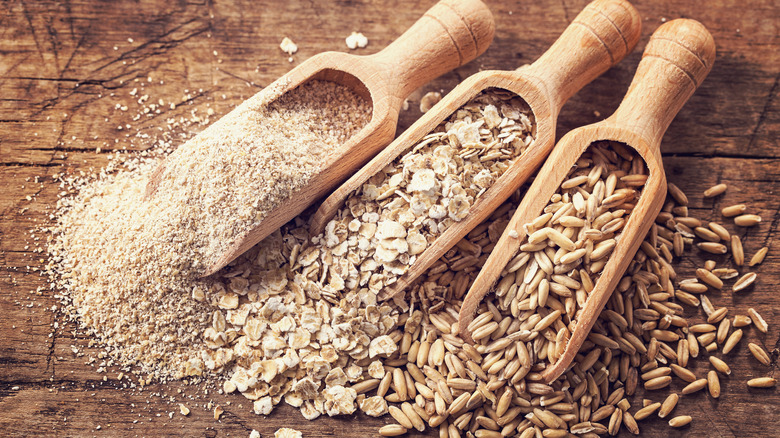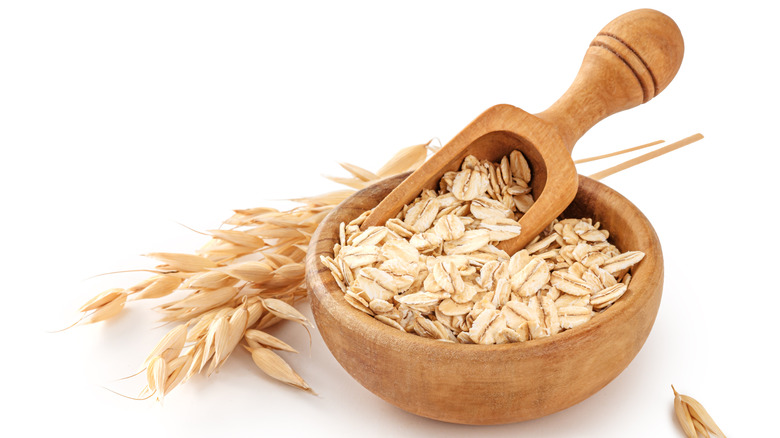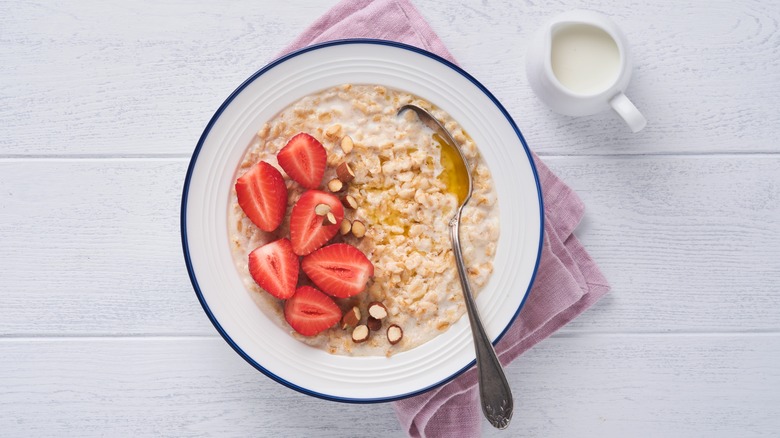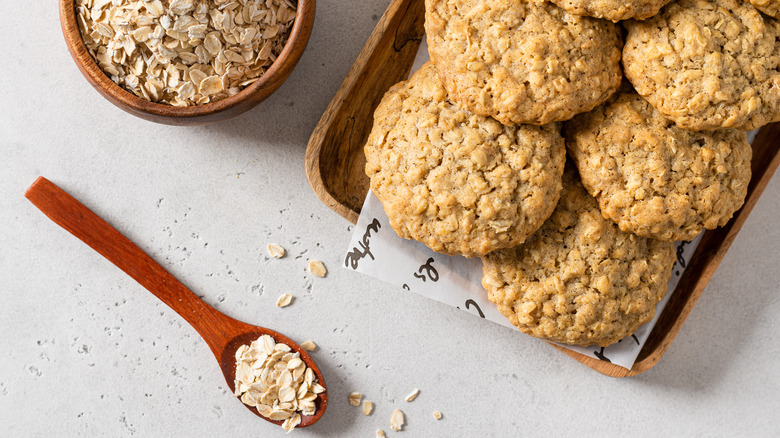Oatmeal Vs. Oat Bran: What's The Difference?
At the grocery store, you may have seen oat bran sitting next to the standard bag of steel-cut oats. While they look incredibly similar, oat bran is unlike other oats we usually buy for our quick breakfast porridge. In fact, oat bran can hardly be considered oatmeal at all, even though it comes from the same grain.
First, it's important to understand the oats we use for oatmeal. Old-fashioned and steel-cut oats are the two most popular types of oatmeal on the market. If you prefer one of these over the other, we have good news: Medical News Today states that the nutritional difference between these two oat types is negligible. This is because they are made up of the same parts of the oat: the whole groats. Steel-cut oats are whole oat groats cut up into small pieces, while rolled oats are steamed and pressed.
Of course, there is a slight difference in texture and preparation method, but both have the same nutritional value. So what makes oat bran different from all types of oatmeal, including steel-cut oats, quick oats, and rolled oats?
Oatmeal is the whole oat groat and oat bran is the outer layer
A good point of comparison would be the difference between white rice and brown rice. If you didn't know the difference, brown rice includes the outer layer of bran and the germ of the grain, while white rice does not (via Healthline). While most oat products are usually the "brown rice" in this analogy, since they include the whole oat itself, oat bran is only the outer layer of the oat grain, which usually comes out as "a byproduct of oat grain processing," per Science Direct.
This means that the oatmeal we're accustomed to contains the whole oat groat, while oat bran is only the outer layer of the groat. For this reason, oat bran disintegrates much faster than regular oatmeal does. Bob's Red Mill states that oat bran takes much less time to soften and has a mushier texture than steel-cut or old-fashioned oats. If we were to rank the textures from chewiest to softest, steel-cut would come first, then rolled, then oat bran. Oat bran is also more nutty and flavorful than other forms of oatmeal, perhaps because it is only the outer part of the oat groat (via Bob's Red Mill).
Oat bran is high in fiber and protein and low in calories
Although oat bran and oatmeal are of the same grain, they have different nutritional compositions. Healthline states that although both oatmeal and oat bran have a similar carb and fat content, oat bran is significantly higher in fiber and protein. Science Direct notes that half of its fiber is soluble while the other half is insoluble. Both types of fiber are incredibly beneficial to gut and heart health, especially beta-glucan fiber, which is soluble (via Healthline). Although oatmeal is usually touted as a health food that makes you feel full longer, oat bran's higher fiber content makes it even more filling for the same serving, according to My Healthy Confessions.
Oat bran is also lower in calories — which makes sense since it is only part of the oat grain, while oatmeal is the entire oat grain without the inedible husk (via My Healthy Confessions). Both oat bran and oatmeal help lower cholesterol and control blood sugar levels due to their soluble fiber (beta-glucan) content.
Oat bran and oatmeal should be prepared differently
Since oat bran is part of oatmeal, we could easily assume that they can be cooked the same way. However, My Healthy Confessions observes that oat bran expanded much more than oatmeal did in an overnight oats experiment. The differences in texture are also notable: Oat bran tends to get mushy, while oatmeal maintains its bite. Thus, Bob's Red Mill advises against replacing oat bran with oatmeal in a recipe with a 1:1 ratio. Since oat bran is more porous and soft, it requires a much shorter cooking time than oatmeal does.
Oats are most often used in baking recipes, and if you don't want to risk a drastic change in texture, you should always make sure you're adding enough oat bran to maintain the density of what you're making. Most oatmeal raisin cookies require rolled oats, and while rolled oats are softer than steel-cut, it still has much more bite than oat bran. However, oat bran's softer, flakey texture is sometimes preferred — like in a nutty granola bar recipe. If you want to substitute oat bran for oatmeal, you can try to blitz some rolled oats in a blender to break down the grain further.



